Can You Block in the Back on Defense
There is a wide variety of blocking techniques used for varying schemes across football, but the underlying theme is that they all fall within the legal framework of the game. If a blocker does not use a legal blocking technique, a penalty flag will be thrown, and a loss of yardage ensues.
A legal block occurs when the blocker strikes the opponent, attacking the front side of the body, with his strike landing within the body's framework. There is a range of intricacies to consider when identifying an illegal block, but they tend to fall outside of this definition of a legal block.
In this article, we will show you the difference between legal and illegal blocks in football.
Legal Blocks In Football
The two ways to engage an opponent are striking through the chest on his feet or cut blocking as he attempts to drive through the opponent's legs.
Upper Body Block
The first legal block we will examine is striking through the chest while still on our feet. This type of block is common in most run and pass schemes and can be identified in any football gameplay.
The player must engage the defender while attacking the front of his body with his hands landing in the inside framework, ideally the breastplate, of the defender's body. If the block does not follow these criteria, a penalty will be issued.
Cut Block
The cut block is often used in space, and its legality can often be difficult to understand. The cut block has been banned at some levels, so be sure to examine your league rules before deciding to utilize this block.
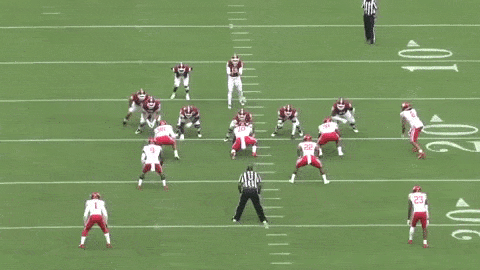
When cutting, a blocker must attack the defender's front side of the lower body without contact from another player. If there is a contact coming from the side or rear while cutting, a flag will be thrown. If another player is already engaged with the defender and decides to cut block, a flag will be thrown.
Illegal Blocks In Football
When a block falls outside of the framework explained above, a penalty flag is thrown. However, some details go into each illegal block that determines the type and severity of the penalty that accompanies the block.
Holding
Holding occurs when the hands go outside the framework of the defender's body during the block. Excessive grabbing of jerseys when striking on the inside of the body can also warrant a holding penalty.
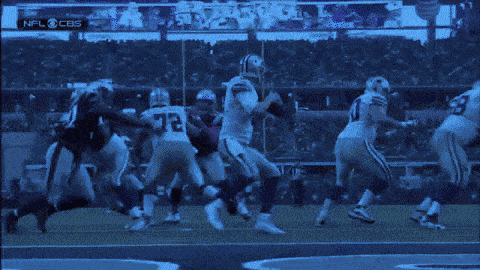
It is important to work on "re-fitting" your hands back inside to avoid this penalty as the defender attempts to put a move on to disengage the blocker.
Ten yards is the penalty for committing this infraction.
Clipping
Clipping occurs when a blocker engages the defender's lower half from the backside. This tends to deal with cut blocking for the most part, but some severe blocks from behind above the belt will also warrant a clipping penalty from the official.
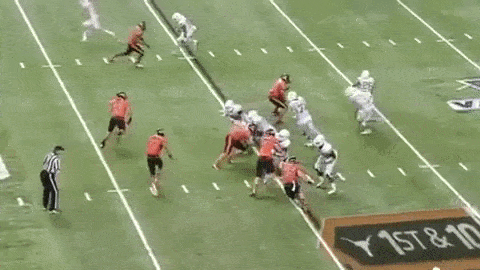
There is a lot of overlap and even misinterpretation with clipping and blocking in the back, but the main difference is the severity and where the block occurs. Clipping is more severe and usually occurs below the waist.
This penalty consists of a loss of fifteen yards when called.
Block in the Back
An Illegal Block in the Back is the less harsh version of clipping. It deals with a strike above the waist to the defender's backside instead of clipping, which occurs below the waist.
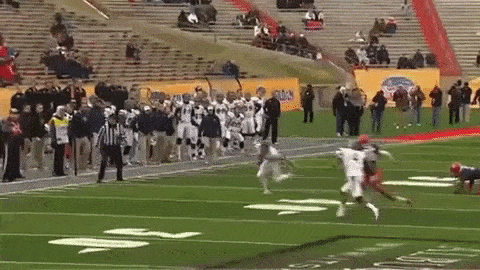
The important thing to remember with this block is that if you are engaged with a defender and give you their backside, it is legal to continue engaging them even though you are striking them in the back. This only applies to the initial engagement tending to occur in the open field.
With it being less harsh than clipping, this infraction only carries a ten-yard penalty.

Hands to the Face
Illegal hands to the face are exactly what it sounds like. This penalty occurs when the player strikes the face or helmet of the opponent.
To avoid this penalty, it is important to remember to once again "re-fit" your hands throughout the course of the block. This tends to get called as the hands travel up the breastplate when the blocker tries to lift. Re-fitting your hands inside and on the breastplate will take your hands away from the head and prevent holding and allow for better leverage on the defender.
This penalty carries a ten-yard loss, but it can be a fifteen-yard loss if it is severe enough to warrant a full face mask penalty.
Chop Block
A High Low block is one of the most dangerous blocks in football. It occurs when two players engage a defender, and one of the blockers is cutting. It can cause severe injuries, and player safety needs to avoid this block.
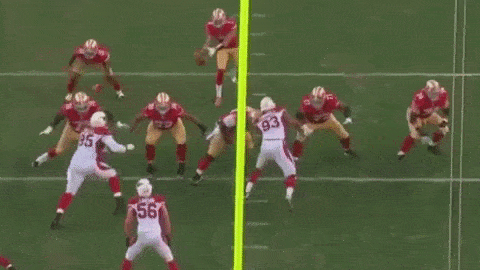
To avoid this penalty, be sure to communicate pre-snap who is cutting with whatever terminology you may use. This way, all linemen know who is cutting and do not engage the defender on the receiving end of the block.
Conclusion
When considering the legality of a block, it is important to consider what portion of the defender the blocker is attacking and if the strike lands in the body's framework.
If it does not land on the front side and within the body's framework, it can fall into the categories of holding, clipping, block in the back, hands to the face, or a high low.
This is a crucial teaching point when teaching younger players. It's important to make sure that they always see their face before making contact.
Successfully running a play but having it called back because of an illegal block can stall an offense and put your team in a bad situation. Field position is often won through positive plays. Negative plays not only lose field position but can often drain a team mentally.
Study the legal blocks and make sure that everything you do is above the waist and efficient.
Can You Block in the Back on Defense
Source: https://www.viqtorysports.com/difference-between-legal-illegal-blocks-in-football/
0 Response to "Can You Block in the Back on Defense"
Post a Comment